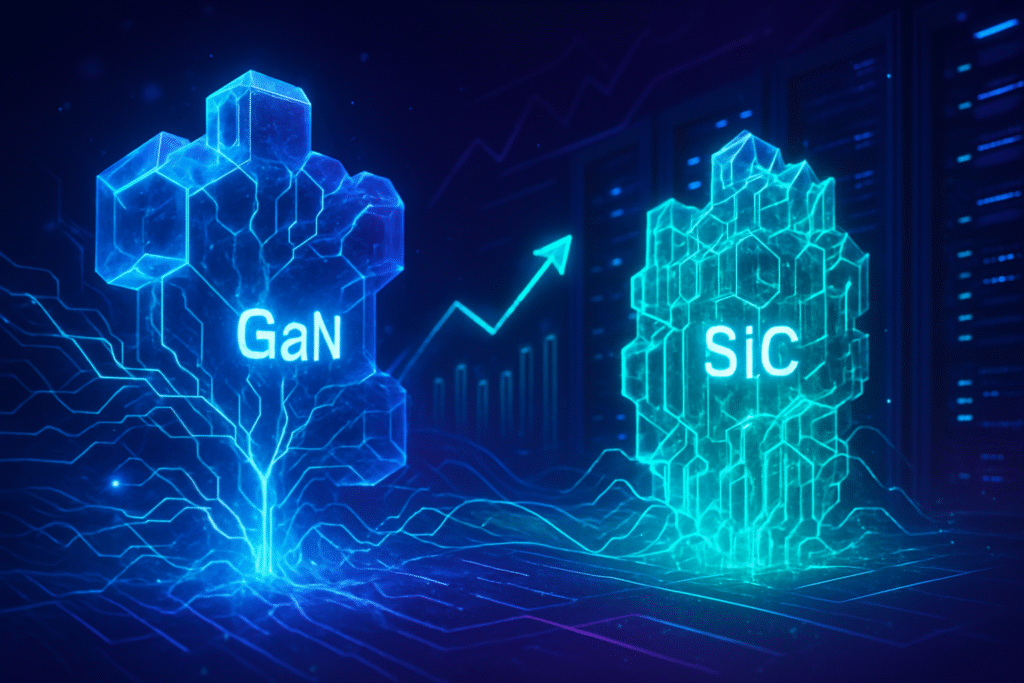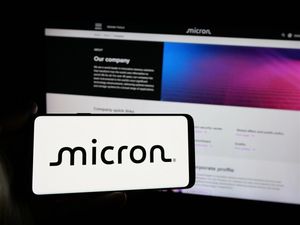
San Jose, CA – October 21, 2025 – Navitas Semiconductor (NASDAQ: NVTS), a pure-play, next-generation power semiconductor company, has captured significant market attention throughout 2025, experiencing an extraordinary rally in its stock price. This surge is primarily fueled by burgeoning optimism surrounding its pivotal role in the artificial intelligence (AI) revolution and the broader shift towards highly efficient power solutions. While the company's all-time high was recorded in late 2021, its recent performance, particularly in the latter half of 2024 and through 2025, underscores a renewed investor confidence in its wide-bandgap (WBG) Gallium Nitride (GaN) and Silicon Carbide (SiC) technologies.
The company's stock, which had already shown robust growth, saw an accelerated climb, soaring over 520% year-to-date by mid-October 2025 and nearly 700% from its year-to-date low in early April. As of October 19, 2025, NVTS shares were up approximately 311% year-to-date, closing around $17.10 on October 20, 2025. This remarkable performance reflects a strong belief in Navitas's ability to address critical power bottlenecks in high-growth sectors, particularly electric vehicles (EVs) and, most significantly, the rapidly expanding AI data center infrastructure. The market's enthusiasm is a testament to the perceived necessity of Navitas's innovative power solutions for the next generation of energy-intensive computing.
The Technological Edge: Powering the Future with GaN and SiC
Navitas Semiconductor's market position is fundamentally anchored in its pioneering work with Gallium Nitride (GaN) and Silicon Carbide (SiC) power semiconductors. These advanced materials represent a significant leap beyond traditional silicon-based power electronics, offering unparalleled advantages in efficiency, speed, and power density. Navitas's GaNFast and GeneSiC
and GeneSiC technologies integrate power, drive, control, sensing, and protection onto a single chip, effectively creating highly optimized power ICs.
technologies integrate power, drive, control, sensing, and protection onto a single chip, effectively creating highly optimized power ICs.
The technical superiority of GaN and SiC allows devices to operate at higher voltages and temperatures, switch up to 100 times faster, and achieve superior energy conversion efficiency. This directly translates into smaller, lighter, and more energy-efficient power systems. For instance, in fast-charging applications, Navitas's GaN solutions enable compact, high-power chargers that can rapidly replenish device batteries. In more demanding environments like data centers and electric vehicles, these characteristics are critical. The ability to handle high voltages (e.g., 800V architectures) with minimal energy loss and thermal dissipation is a game-changer for systems that consume massive amounts of power. This contrasts sharply with previous silicon-based approaches, which often required larger form factors, more complex cooling systems, and inherently suffered from greater energy losses, making them less suitable for the extreme demands of modern AI computing and high-performance EVs. Initial reactions from the AI research community and industry experts highlight GaN and SiC as indispensable for the next wave of technological innovation, particularly as power consumption becomes a primary limiting factor for AI scale.
Reshaping the AI and EV Landscape: Who Benefits?
Navitas Semiconductor's advancements are poised to significantly impact a wide array of AI companies, tech giants, and startups. Companies heavily invested in building and operating AI data centers stand to benefit immensely. Tech giants like NVIDIA (NASDAQ: NVDA), a recent strategic partner, will find Navitas's GaN and SiC solutions crucial for their next-generation 800V DC AI factory computing platforms. This partnership not only validates Navitas's technology but also positions it as a key enabler for the leading edge of AI infrastructure.
The competitive implications for major AI labs and tech companies are substantial. Those who adopt advanced WBG power solutions will gain strategic advantages in terms of energy efficiency, operational costs, and the ability to scale their computing power more effectively. This could disrupt existing products or services that rely on less efficient power delivery, pushing them towards obsolescence. For instance, traditional power supply manufacturers might need to rapidly integrate GaN and SiC into their offerings to remain competitive. Navitas's market positioning as a pure-play specialist in these next-generation materials gives it a significant strategic advantage, as it is solely focused on optimizing these technologies for emerging high-growth markets. Its ability to enable a 100x increase in server rack power capacity by 2030 speaks volumes about its potential to redefine data center design and operation.
Beyond AI, the electric vehicle (EV) sector is another major beneficiary. Navitas's GaN and SiC solutions facilitate faster EV charging, greater design flexibility, and are essential for advanced 800V architectures that support bidirectional charging and help meet stringent emissions targets. Design wins, such as the GaN-based EV onboard charger with China's leading EV manufacturer Changan Auto, underscore its growing influence in this critical market.
Wider Significance: Powering the Exascale Future
Navitas Semiconductor's rise fits perfectly into the broader AI landscape and the overarching trend towards sustainable and highly efficient technology. As AI models grow exponentially in complexity and size, the energy required to train and run them becomes a monumental challenge. Traditional silicon power conversion is reaching its limits, making wide-bandgap semiconductors like GaN and SiC not just an improvement, but a necessity. This development highlights a critical shift in the AI industry: while focus often remains on chips and algorithms, the underlying power infrastructure is equally vital for scaling AI.
The impacts extend beyond energy savings. Higher power density means smaller, lighter systems, reducing the physical footprint of data centers and EVs. This is crucial for environmental sustainability and resource optimization. Potential concerns, however, include the rapid pace of adoption and the ability of the supply chain to keep up with demand for these specialized materials. Comparisons to previous AI milestones, such as the development of powerful GPUs, show that enabling technologies for underlying infrastructure are just as transformative as the computational engines themselves. Navitas’s role is akin to providing the high-octane fuel and efficient engine management system for the AI supercars of tomorrow.
The Road Ahead: What to Expect
Looking ahead, Navitas Semiconductor is poised for significant near-term and long-term developments. The partnership with Powerchip Semiconductor Manufacturing Corp (PSMC) for 200mm GaN-on-Si wafer production, with initial output expected in the first half of 2026, aims to expand manufacturing capacity, lower costs, and support its ambitious roadmap for AI data centers. The company also reported over 430 design wins in 2024, representing a potential associated revenue of $450 million, indicating a strong pipeline for future growth, though the conversion of these wins into revenue can take 2-4 years for complex projects.
Potential applications and use cases on the horizon include further penetration into industrial power, solar energy, and home appliances, leveraging the efficiency benefits of GaN and SiC. Experts predict that Navitas will continue to introduce advanced power platforms, with 4.5kW GaN/SiC platforms pushing power densities and 8-10kW platforms planned by late 2024 to meet 2025 AI power requirements. Challenges that need to be addressed include Navitas's current unprofitability, as evidenced by revenue declines in Q1 and Q2 2025, and periods of anticipated market softness in sectors like solar and EV in the first half of 2025. Furthermore, its high valuation (around 61 times expected sales) places significant pressure on future growth to justify current prices.
A Crucial Enabler in the AI Era
In summary, Navitas Semiconductor's recent stock performance and the surrounding market optimism are fundamentally driven by its strategic positioning at the forefront of wide-bandband semiconductor technology. Its GaN and SiC solutions are critical enablers for the next generation of high-efficiency power conversion, particularly for the burgeoning demands of AI data centers and the rapidly expanding electric vehicle market. The strategic partnership with NVIDIA is a key takeaway, solidifying Navitas's role in the most advanced AI computing platforms.
This development marks a significant point in AI history, underscoring that infrastructure and power efficiency are as vital as raw computational power for scaling artificial intelligence. The long-term impact of Navitas's technology could be profound, influencing everything from the environmental footprint of data centers to the range and charging speed of electric vehicles. What to watch for in the coming weeks and months includes the successful ramp-up of its PSMC manufacturing partnership, the conversion of its extensive design wins into tangible revenue, and the company's progress towards sustained profitability. The market will closely scrutinize how Navitas navigates its high valuation amidst continued investment in scaling its innovative power solutions.
This content is intended for informational purposes only and represents analysis of current AI developments.
TokenRing AI delivers enterprise-grade solutions for multi-agent AI workflow orchestration, AI-powered development tools, and seamless remote collaboration platforms.
For more information, visit https://www.tokenring.ai/.






